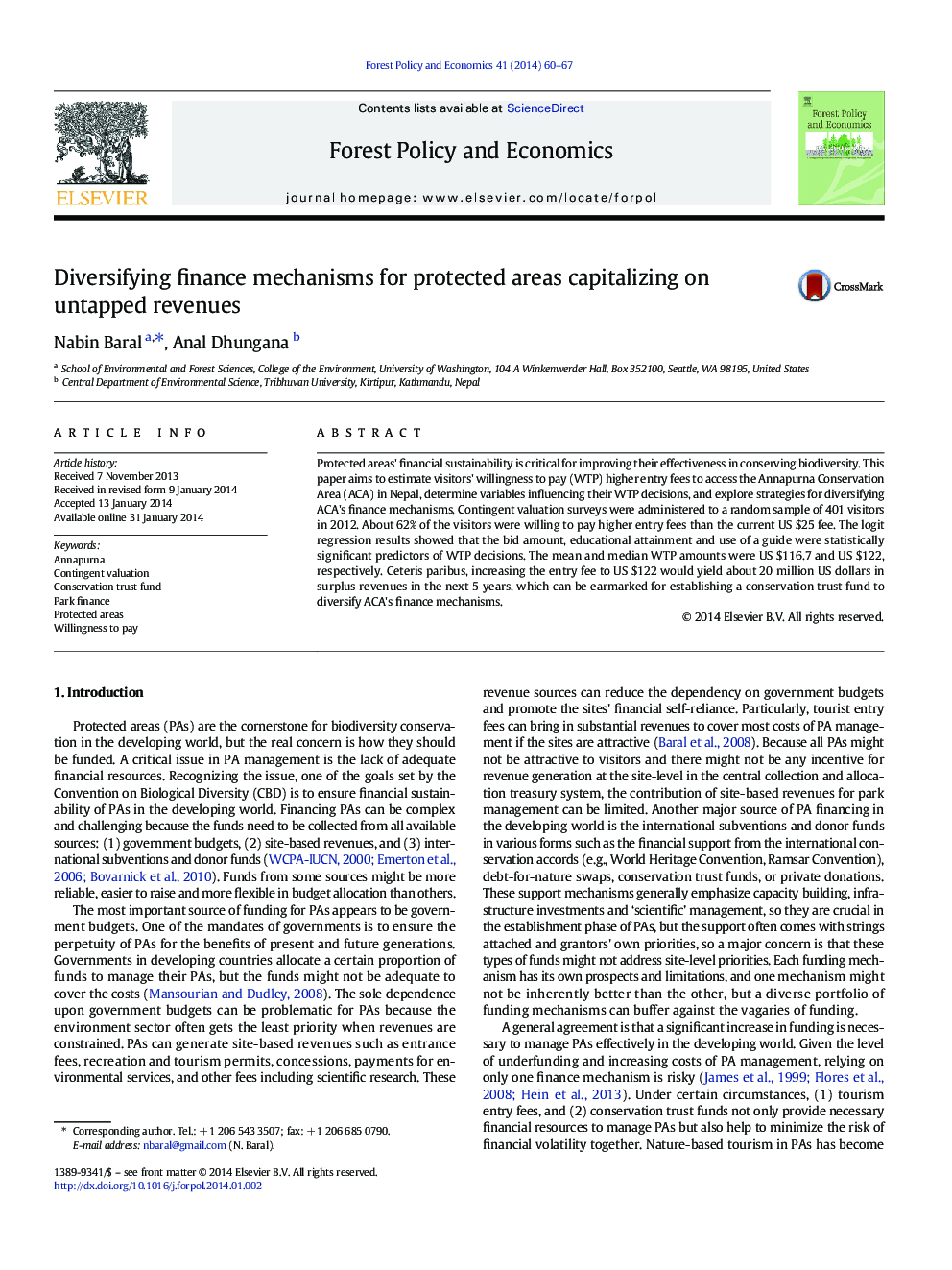| Article ID | Journal | Published Year | Pages | File Type |
|---|---|---|---|---|
| 6544991 | Forest Policy and Economics | 2014 | 8 Pages |
Abstract
Protected areas' financial sustainability is critical for improving their effectiveness in conserving biodiversity. This paper aims to estimate visitors' willingness to pay (WTP) higher entry fees to access the Annapurna Conservation Area (ACA) in Nepal, determine variables influencing their WTP decisions, and explore strategies for diversifying ACA's finance mechanisms. Contingent valuation surveys were administered to a random sample of 401 visitors in 2012. About 62% of the visitors were willing to pay higher entry fees than the current US $25 fee. The logit regression results showed that the bid amount, educational attainment and use of a guide were statistically significant predictors of WTP decisions. The mean and median WTP amounts were US $116.7 and US $122, respectively. Ceteris paribus, increasing the entry fee to US $122 would yield about 20Â million US dollars in surplus revenues in the next 5Â years, which can be earmarked for establishing a conservation trust fund to diversify ACA's finance mechanisms.
Related Topics
Life Sciences
Agricultural and Biological Sciences
Forestry
Authors
Nabin Baral, Anal Dhungana,
